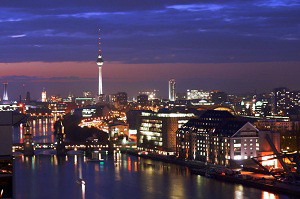
Berlin Museums
There are plenty of opportunities to visit museums in Berlin! Although its museums are not as famous as the Vatican museums in Rome or the Louvre in Paris, Berlin has no reason at all to be ashamed about its offer. The wonderful museum island with its five museums in the river Spree offers artefacts and artistic objects of many ancient civilisations. The history of Germany itself is made visible in for instance the Wannsee museum, the DDR museums and the Berlin wall museum (for the latter, see the section Travel Guide). Another highlight is the modern and very well organised Jewish museum, which gives a great insight in the culture and traditions of this religious and ethnic group.
Jewish museum, Lindenstrasse 9-14
Haus der Wannsee-Konferenz
In this villa at Wannsee lake between Berlin and nearby Potsdam, the plan for a "final solution" for Jews in Europe was drafted. The conference took place on 20 January 1942, and was attended by high Nazi officials as Eichmann, but in absence of the main leaders Hitler and Himmler. At the conference, there was a long discussion between possible alternative "solutions": imprisonment, sterilisation or gassing. In the end, the participants decided in favour of the last option. Subsequently, thousands of Jews where gassed in concentration camps as Auschwitz, Sobibor and Treblinka. The conference has been visualised in the movie Conspiracy (2001). The current museum documents the conference and the results of the horrible decision taken there.
Am Großen Wannsee 56, Berlin.
Museuminsel
The so-called Museum Island in the river Spree houses five different museums. The Alte Nationalgalerie (old national gallery) has a collection of 19th century art, whilst the Altes Museum (old museum) focuses on the art and culture of ancient civilisations as the Greeks, the Romans and the Etruscans. The Bode museum specialises in statues and paintings from several eras and in Byzantine art. Despite the name, the recently opened Neues Museum (new museum) displays classical art from the near Orient and ancient Egypt up to the Atlantic. Finally, the Pergamon museum exhibits the Pergamon altar made to pay respect the Greek deities Athens and Zeus, and large collections of Middle Eastern and Islamic art from the ancient times until the 19th century.
Museuminsel, Bodestrasse 1-3.
DDR Museum Berlin
Die Deutsche Demokratische Republik or German Democratic Republic, better known as East Germany, was a socialist state existing from the end of the Second World War until the German reunification in 1990. Whilst the capitalist West Germany experienced its economic boom in these years, the "Ossies" or Easterners tried out the ideas of Marx, Lenin and Stalin and rode plastic Trabant cars. The interactive museum drives upon "Ostalgie" (East-Germany nostalgia) of the early 2000s, with for example the movie Good Bye Lenin. Another GDR-oriented museum is the Stasi museum, dedicated to the Eastern German secret police. The cinematographic reference here is Das Leben der Anderen (The life of the others).
DDR Museum Berlin, Karl-Liebknecht-Strasse 1.
Stasimuseum Berlin, Gedenkstätte Normannenstrasse, Ruschestrasse 103, House 1.
Science Center Spectrum
It might be hard to drag your kids into a museum, but that will be different with Science Center – and maybe they won’t even notice it is a museum. In the Science Center, they’ll learn about scientific concepts as gravity and magnetism by playing and experimenting. With more than 250 experiments, there is a lot to discover about our life and the environment.
Möckernstrasse 26.
